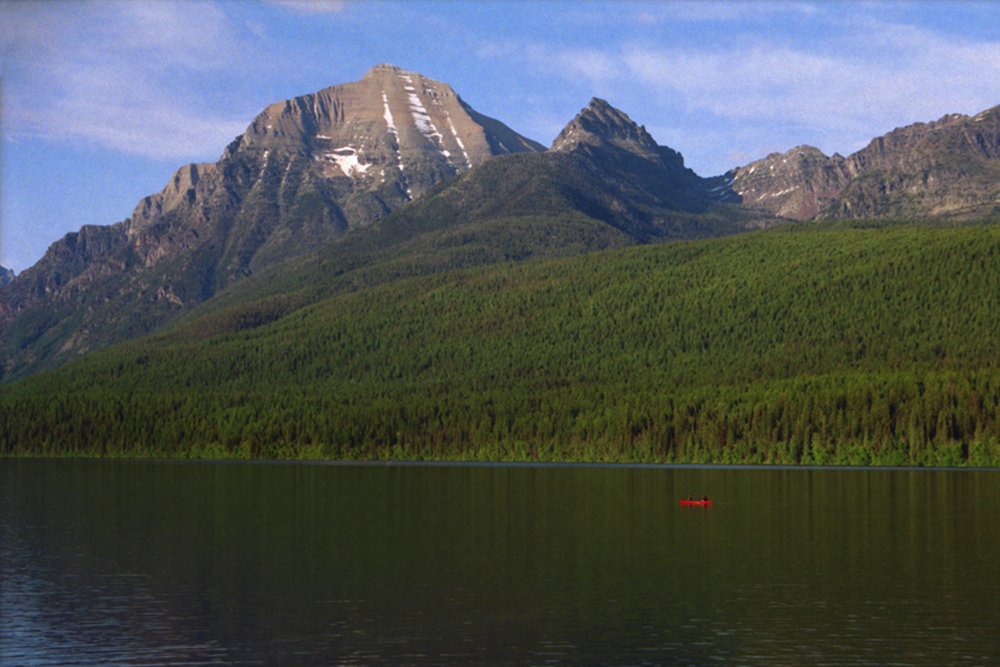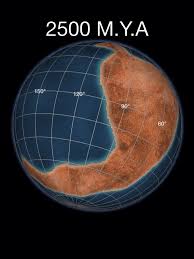|
Great Falls Tectonic Zone
The Great Falls Tectonic Zone is a major intracontinental shear zone between the Hearne craton and Wyoming craton basement rock of the Archean Eon which form part of the North American continent.Boerner, D.E.; Craven, J.A.; Kurtz, R.D.; Ross, G.M.; and Jones, F.W. "The Great Falls Tectonic Zone: Suture or Intracontinental Shear Zone?" ''Canadian Journal of Earth Sciences.'' 35:2 (1998).Mueller, Paul A.; Heatherington, Ann L.; Kelly, Dawn M.; Wooden, Joseph L.; and Mogk, David W. "Paleoproterozoic Crust Within the Great Falls Tectonic Zone: Implications for the Assembly of Southern Laurentia." ''Geology.'' 30:2 (February 2002).Harms, Tekla A.; Brady, John B.; Burger, H. Robert; and Cheney, John T. "Advances in the Geology of the Tobacco Root Mountains, Montana, and Their Implications for the History of the Northern Wyoming Province." ''Precambrian Geology of the Tobacco Root Mountains, Montana.'' Special Papers, Volume 377. John B. Brady, H. Robert Burger, John T. Cheney, and Tekla A ... [...More Info...] [...Related Items...] OR: [Wikipedia] [Google] [Baidu] |
Little Belt Mountains
The Little Belt Mountains are a section of the Rocky Mountains in the U.S. The United States of America (U.S.A. or USA), commonly known as the United States (U.S. or US) or America, is a country primarily located in North America. It consists of 50 states, a federal district, five major unincorporated territori ... state of Montana. Situated mainly in the Lewis and Clark National Forest, the mountains are used for logging and recreation for the residents of Great Falls, Montana. Showdown Ski Area, Showdown is a ski area located within the mountains located off US Highway 89 which splits the mountains in half connecting White Sulphur Springs, MT, White Sulphur Springs and Belt, MT. The highest point in the Little Belt Range is Big Baldy Mountain at . The Little Belts have been mined for silver since the 1880s, and for sapphire since 1896. The sapphires, called Yogo sapphires as they are mined near Yogo Creek, occur in a formation long and across. The mountains are nam ... [...More Info...] [...Related Items...] OR: [Wikipedia] [Google] [Baidu] |
Precambrian United States
The Precambrian (or Pre-Cambrian, sometimes abbreviated pꞒ, or Cryptozoic) is the earliest part of Earth's history, set before the current Phanerozoic Eon. The Precambrian is so named because it preceded the Cambrian, the first period of the Phanerozoic Eon, which is named after Cambria, the Latinised name for Wales, where rocks from this age were first studied. The Precambrian accounts for 88% of the Earth's geologic time. The Precambrian is an informal unit of geologic time, subdivided into three eons (Hadean, Archean, Proterozoic) of the geologic time scale. It spans from the formation of Earth about 4.6 billion years ago ( Ga) to the beginning of the Cambrian Period, about million years ago ( Ma), when hard-shelled creatures first appeared in abundance. Overview Relatively little is known about the Precambrian, despite it making up roughly seven-eighths of the Earth's history, and what is known has largely been discovered from the 1960s onwards. The Precambrian fossil re ... [...More Info...] [...Related Items...] OR: [Wikipedia] [Google] [Baidu] |
Geology Of Montana
The geology of Montana includes thick sequences of Paleozoic, Mesozoic and Cenozoic sedimentary rocks overlying ancient Archean and Proterozoic crystalline basement rock. Eastern Montana has considerable oil and gas resources, while the uplifted Rocky Mountains in the west, which resulted from the Laramide orogeny and other tectonic events have locations with metal ore. Geologic History, Stratigraphy & Tectonics The oldest rocks in Montana are part of the Archean Wyoming Craton in the center and east of the state, primarily between Livingston and Red Lodge, as well as small areas in the Little Belt Mountains around Neihart and the core of the Little Rocky Mountains south of Harlem. Drill cores indicate that these rocks underlie much of the Great Plains. The Pony Group, Cherry Creek Group and the Stillwater Complex are examples of Precambrian metamorphic rock units The first two groups are made up of folded and metamorphosed marine sedimentary rocks which were folded, metamorphosed ... [...More Info...] [...Related Items...] OR: [Wikipedia] [Google] [Baidu] |
Archean Geology
The Archean Eon ( , also spelled Archaean or Archæan) is the second of four geologic eons of Earth's history, representing the time from . The Archean was preceded by the Hadean Eon and followed by the Proterozoic. The Earth during the Archean was mostly a water world: there was continental crust, but much of it was under an ocean deeper than today's ocean. Except for some trace minerals, today's oldest continental crust dates back to the Archean. Much of the geological detail of the Archean has been destroyed by subsequent activity. The earliest known life started in the Archean. Life was simple throughout the Archean, mostly represented by shallow-water microbial mats called stromatolites, and the atmosphere lacked free oxygen. Etymology and changes in classification The word ''Archean'' comes from the Greek word (), meaning 'beginning, origin'. It was first used in 1872, when it meant 'of the earliest geological age'. Before the Hadean Eon was recognized, the Archean ... [...More Info...] [...Related Items...] OR: [Wikipedia] [Google] [Baidu] |
Lithos (journal)
''Lithos'' is a peer-reviewed academic journal, publishing original research papers on the petrology, geochemistry and petrogenesis of igneous and metamorphic Metamorphic rocks arise from the transformation of existing rock to new types of rock in a process called metamorphism. The original rock (protolith) is subjected to temperatures greater than and, often, elevated pressure of or more, causi ... rocks. Lithos is a hybrid open-access journal and publishes both subscription and open access articles. References English-language journals Geology journals Elsevier academic journals {{geology-journal-stub ... [...More Info...] [...Related Items...] OR: [Wikipedia] [Google] [Baidu] |
Great Falls, Montana
Great Falls is the third most populous city in the U.S. state of Montana and the county seat of Cascade County. The population was 60,442 according to the 2020 census. The city covers an area of and is the principal city of the Great Falls, Montana, Metropolitan Statistical Area, which encompasses all of Cascade County. The Great Falls MSA’s population stood at 84,414 in the 2020 census. A cultural, commercial and financial center in the central part of the state, Great Falls is located just east of the Rocky Mountains and is bisected by the Missouri River. It is from the east entrance to Glacier National Park in northern Montana, and from Yellowstone National Park in southern Montana and northern Wyoming. A north–south federal highway, Interstate 15, serves the city. Great Falls is named for a series of five waterfalls located on the Missouri River north and east of the city. The Lewis and Clark Expedition of 1805–1806 was forced to portage around a stretch of t ... [...More Info...] [...Related Items...] OR: [Wikipedia] [Google] [Baidu] |
Adel Mountains Volcanic Field
The Adel Mountains Volcanic Field (also known as the Adel Mountains, Adel Volcanics, and Adel Mountain Volcanics) is an ancient volcanic field of heavily eroded 75-million-year-oldGunderson, Jay A. and Sheriff, Steven D. "A New Late Cretaceous Paleomagnetic Pole from the Adel Mountains, West Central Montana." ''Journal of Geophysical Research.'' 96:B1 (January 10, 1991).Harlan, Stephen S.; Geissman, John W.; Snee, Lawrence W.; and Reynolds, Richard L. "Late Cretaceous Remagnetization of Proterozoic Mafic Dikes, Southern Highland Mountains, Southwestern Montana: A Paleomagnetic and 40Ar/39Ar Study." ''Geological Society of America Bulletin.'' 108:6 (June 1996). igneous rocks about 40 miles long and 20 miles wide (800 square miles, or 2,071 square kilometers)Merrill-Maker, Andrea. ''Montana Almanac.'' 2d ed. Guilford, Conn.: Globe Pequot, 2005. [...More Info...] [...Related Items...] OR: [Wikipedia] [Google] [Baidu] |
Precambrian
The Precambrian (or Pre-Cambrian, sometimes abbreviated pꞒ, or Cryptozoic) is the earliest part of Earth's history, set before the current Phanerozoic Eon. The Precambrian is so named because it preceded the Cambrian, the first period of the Phanerozoic Eon, which is named after Cambria, the Latinised name for Wales, where rocks from this age were first studied. The Precambrian accounts for 88% of the Earth's geologic time. The Precambrian is an informal unit of geologic time, subdivided into three eons ( Hadean, Archean, Proterozoic) of the geologic time scale. It spans from the formation of Earth about 4.6 billion years ago ( Ga) to the beginning of the Cambrian Period, about million years ago ( Ma), when hard-shelled creatures first appeared in abundance. Overview Relatively little is known about the Precambrian, despite it making up roughly seven-eighths of the Earth's history, and what is known has largely been discovered from the 1960s onwards. The Precambrian fossil ... [...More Info...] [...Related Items...] OR: [Wikipedia] [Google] [Baidu] |
Mineralization (geology)
In geology, mineralization is the deposition of economically important metals in the formation of ore bodies or "lodes" by various process. The first scientific studies of this process took place in the English county of Cornwall by J.W.Henwood FRS and later by R.W. Fox, FRS.Embrey, P. G. and Symes, R. F. ''Minerals of Cornwall and Devon'', London, British Museum of Natural History, 1987. hardback, 0-565-00989-3 paperback. page 14, and bibliography Fox: 135, Henwood: 137/8 The term can also refer to the process by which waterborne minerals, such as calcium carbonate (calcite), iron oxide (hematite or limonite) or silica (quartz), replace organic material within the body of an organism that has died and was buried by sediments. Mineralization may also refer to the product resulting from the process of mineralization. For example, mineralization (the process) may introduce metals (such as iron) into a rock. That rock may then be referred to as possessing iron mineralization. ... [...More Info...] [...Related Items...] OR: [Wikipedia] [Google] [Baidu] |
Subduction
Subduction is a geological process in which the oceanic lithosphere is recycled into the Earth's mantle at convergent boundaries. Where the oceanic lithosphere of a tectonic plate converges with the less dense lithosphere of a second plate, the heavier plate dives beneath the second plate and sinks into the mantle. A region where this process occurs is known as a subduction zone, and its surface expression is known as an arc-trench complex. The process of subduction has created most of the Earth's continental crust. Rates of subduction are typically measured in centimeters per year, with the average rate of convergence being approximately two to eight centimeters per year along most plate boundaries. Subduction is possible because the cold oceanic lithosphere is slightly denser than the underlying asthenosphere, the hot, ductile layer in the upper mantle underlying the cold, rigid lithosphere. Once initiated, stable subduction is driven mostly by the negative buoyancy of the de ... [...More Info...] [...Related Items...] OR: [Wikipedia] [Google] [Baidu] |
Gravity Anomaly
The gravity anomaly at a location on the Earth's surface is the difference between the observed value of gravity and the value predicted by a theoretical model. If the Earth were an ideal oblate spheroid of uniform density, then the gravity measured at every point on its surface would be given precisely by a simple algebraic expression. However, the Earth has a rugged surface and non-uniform composition, which distorts its gravitational field. The theoretical value of gravity can be corrected for altitude and the effects of nearby terrain, but it usually still differs slightly from the measured value. This gravity anomaly can reveal the presence of subsurface structures of unusual density. For example, a mass of dense ore below the surface will give a positive anomaly due to the increased gravitational attraction of the ore. Different theoretical models will predict different values of gravity, and so a gravity anomaly is always specified with reference to a particular model. The ... [...More Info...] [...Related Items...] OR: [Wikipedia] [Google] [Baidu] |






